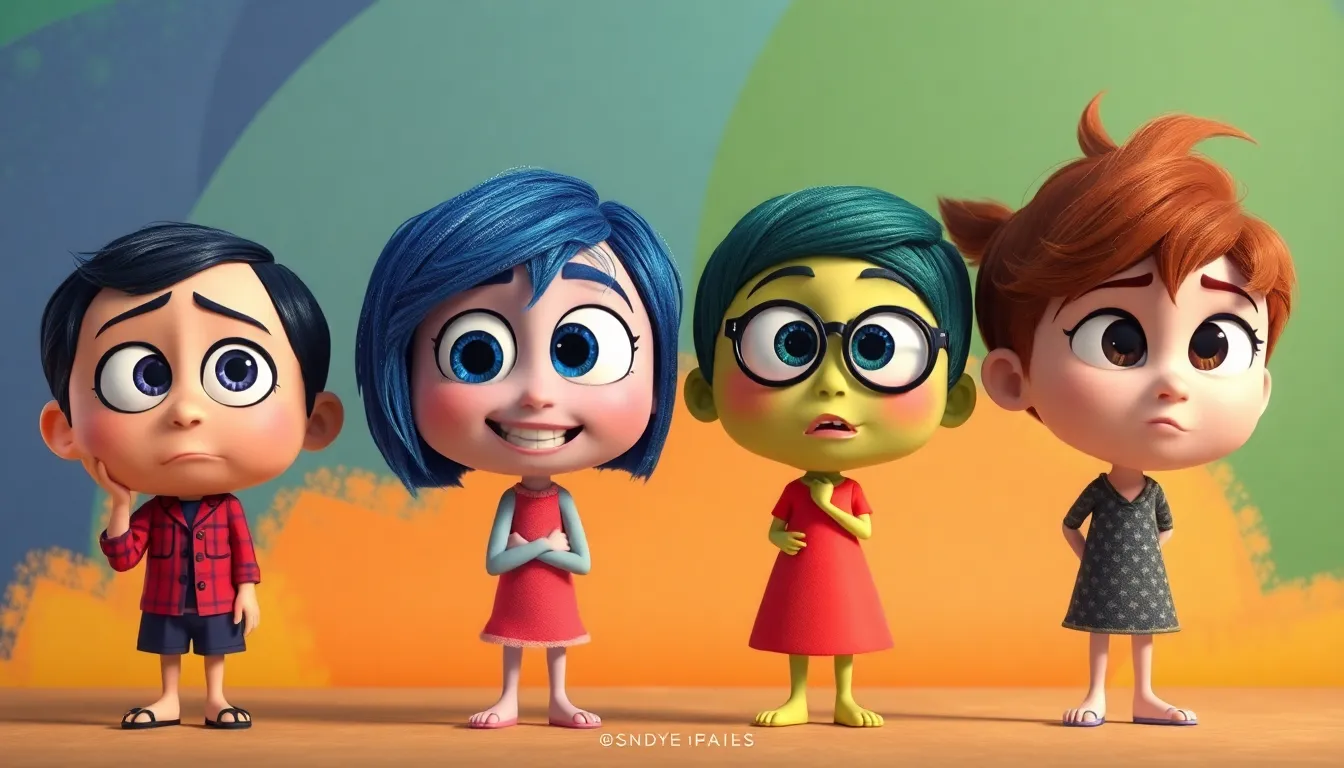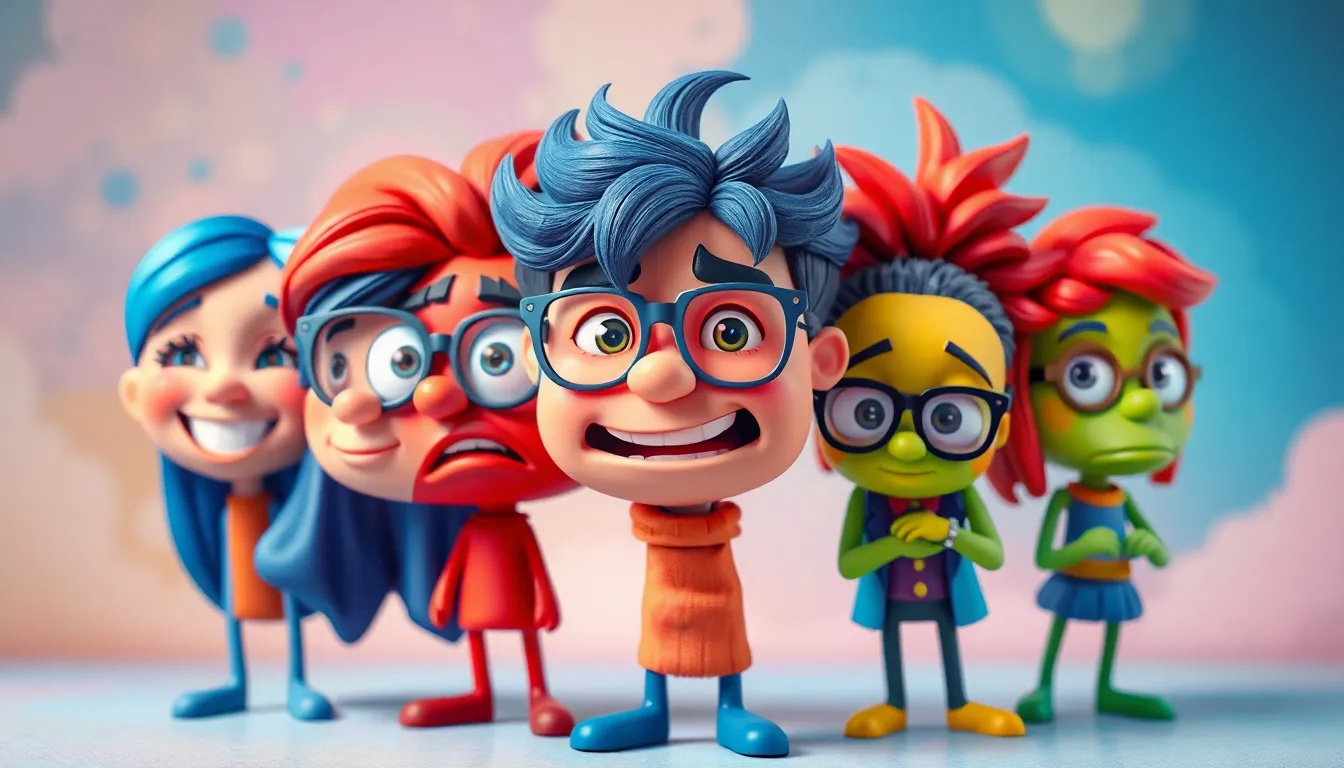In the vibrant world of Pixar’s Inside Out, emotions come alive in a way that resonates with audiences of all ages. As fans eagerly anticipate the release of Inside Out 2, curiosity surrounds the new emotions that will join the beloved cast. The original film introduced Joy, Sadness, Anger, Fear, and Disgust, each playing a crucial role in shaping Riley’s experiences and growth.
With the sequel on the horizon, the question arises: what new emotions will emerge to guide Riley through her next chapter? Exploring these fresh characters not only enriches the narrative but also deepens the understanding of the complexities of human feelings. As the story unfolds, viewers will discover how these new emotions interact with the familiar ones, creating a dynamic tapestry of emotional experiences.
Table of Contents
ToggleOverview of Inside Out 2
Inside Out 2 introduces new emotions that contribute to Riley’s evolving experiences. Each new character adds depth to her emotional landscape, reflecting the complexities of adolescence.
New Emotions in Inside Out 2
- Anxiety: Represents feelings of worry and apprehension, reflecting the challenges of growing up.
- Pride: Captures the joy derived from personal achievements and successful interactions.
- Embarrassment: Highlights the awkwardness often felt during teenage years, aiming to resonate with viewers.
- Longing: Expresses the desire for connection and belonging, a critical theme in Riley’s development.
These new emotions complement the original characters: Joy, Sadness, Anger, Fear, and Disgust. Each emotion has a distinct role that influences Riley’s decisions and relationships, enhancing the narrative’s emotional authenticity.
Impact of New Emotions
The inclusion of new emotions not only enriches the storyline but also serves as a tool for viewers to better understand their feelings. As Riley navigates her life’s challenges, these emotions will guide her through experiences like friendship, self-identity, and personal growth.
The dynamic interactions between the classic emotions and the new characters create a multi-dimensional experience for the audience. This evolution makes Inside Out 2 resonate with both returning fans and new viewers, ensuring an engaging exploration of emotional development during adolescence.
New Emotions Introduced

Inside Out 2 introduces several new emotions that enhance Riley’s journey through adolescence. These characters—Anxiety, Pride, Embarrassment, and Longing—play crucial roles in shaping her experiences and responses to life’s challenges.
Detailed Emotion Descriptions
- Anxiety: Anxiety represents the feelings of unease and worry that arise in uncertain situations. This emotion influences Riley’s decisions by amplifying her awareness of potential dangers and fostering caution in her interactions.
- Pride: Pride embodies a sense of accomplishment and self-worth. It encourages Riley to celebrate her achievements, motivating her to pursue goals and foster a positive self-image.
- Embarrassment: Embarrassment captures the awkwardness and vulnerability often felt during social interactions. This emotion helps Riley navigate the complexities of peer relationships, impacting her choices and personal growth.
- Longing: Longing reflects deep desires and aspirations for experiences or connections. It impacts Riley’s emotional landscape by driving her to seek fulfilling relationships and strive for future happiness.
Significance of Each Emotion
Anxiety heightens Riley’s ability to assess risks, establishing essential self-protective instincts. Pride reinforces her confidence, affirming her capabilities and encouraging ambition. Embarrassment fosters resilience as Riley learns to cope with social blunders, ultimately shaping her interpersonal skills. Longing deepens her emotional experiences, making her journey relatable and enriching. Together, these new emotions cultivate a nuanced understanding of adolescent development, enhancing the film’s narrative depth and viewer engagement.
Returning Emotions from the Original Film
The original emotions from Pixar’s Inside Out—Joy, Sadness, Anger, Fear, and Disgust—remain central to the sequel. Their roles expand as they encounter new feelings, contributing to Riley’s emotional development.
How They Evolve in the Sequel
- Joy: Joy continues as the primary emotion, striving to maintain Riley’s happiness. The introduction of new emotions challenges Joy to understand the balance between happiness and other feelings, leading her to appreciate the value of sadness and vulnerability.
- Sadness: Sadness grows in importance. Experiences in adolescent life prompt Sadness to guide Riley through difficult moments, reinforcing that it’s okay to feel negative emotions. This evolution underscores the necessity of acknowledging sadness in personal growth.
- Anger: Anger becomes more complex. As Riley faces new challenges, Anger’s reactions frequently escalate, prompting discussions about healthy expressions of frustration. This evolution emphasizes the need for constructive outlets for anger to foster emotional maturity.
- Fear: Fear takes on a more nuanced role in the sequel. It enhances Riley’s ability to assess risks while navigating her teenage years. The evolution underscores the importance of fear in decision-making processes.
- Disgust: Disgust adapts to Riley’s changing social dynamics. As peer relationships become more intricate, Disgust’s role highlights the significance of self-acceptance and the avoidance of negative influences in adolescent life.
This evolution of returning emotions enriches the narrative, providing a layered exploration of human emotions with each character grappling with Riley’s transition into adolescence.
Impact of Emotions on Characters
The introduction of new emotions in Inside Out 2 significantly impacts character development and relationships. Each new character enriches Riley’s emotional landscape, reflecting the complexities faced during adolescence.
- Anxiety amplifies feelings of unease and worry, enhancing Riley’s perception of potential dangers and influencing her decision-making processes.
- Pride fosters a sense of accomplishment, motivating Riley to celebrate her achievements and strive toward personal goals.
- Embarrassment captures the awkwardness of social interactions, guiding Riley through the challenges of peer relationships.
- Longing reflects deep desires for meaningful connections and experiences, driving Riley to seek fulfillment in her life.
The dynamics between new and original emotions create a more intricate emotional environment, helping viewers better understand their own feelings.
The original emotions from Inside Out maintain their central roles while evolving in response to new feelings.
- Joy strives for Riley’s happiness but also learns the importance of embracing sadness and vulnerability.
- Sadness becomes essential in guiding Riley through her struggles, reinforcing the value of acknowledging negative emotions for personal growth.
- Anger evolves to highlight the necessity of finding constructive outlets for frustration.
- Fear assumes a refined role, enhancing Riley’s ability to evaluate risks in various situations.
- Disgust adapts to emphasize self-acceptance amid changing social dynamics.
The progression of both new and returning emotions deepens the narrative, exploring human experiences intricately as each character navigates Riley’s journey into adolescence.
Inside Out 2 promises to be a rich exploration of emotions that resonate with audiences of all ages. The introduction of new characters like Anxiety, Pride, Embarrassment, and Longing not only enhances Riley’s journey but also reflects the intricate emotional landscape of adolescence.
As viewers witness the interplay between familiar and new emotions, they’ll gain a deeper understanding of their own feelings and experiences. This sequel stands to reinforce the importance of embracing all emotions, highlighting how they shape personal growth and relationships. With its engaging narrative and relatable themes, Inside Out 2 is set to captivate hearts and minds, making it a must-watch for fans and newcomers alike.



